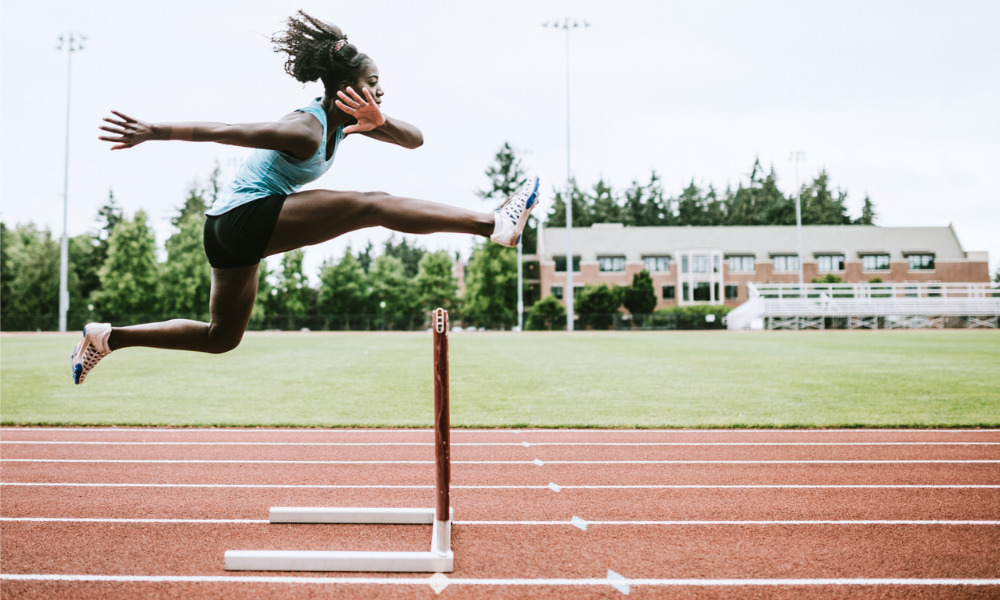‘Many of the ways athletes prepare for competition in the heat to maximize their performance are practices that can be adopted in the workforce to maximize productivity’

Industrial workers can learn a lot about how to maximize their performance and productivity at work by watching how athletes train, eat, sleep, and care for their bodies. Elite athletes are constantly trying to find ways to gain a slight edge over their competition by controlling every possible variable that they can. They must perform in various environmental conditions, including heat, which can lead to a suboptimal performance. Many of the ways athletes prepare for competition in the heat to maximize their performance are practices that can be adopted in the workforce to maximize productivity. Below are tips for commercial workers:
Heat Acclimatization:
Most heat-related injuries and illnesses occur during the first 1-2 weeks of working in the heat, so by acclimatizing (i.e., adapting) to the heat, you minimize the risk of heat illness and death. Acclimatization to the heat can occur via exercise in the heat, sauna or hot water bath, or working in the heat. The largest changes to your body (during the acclimatization process) happen in the first 4-5 days, but full acclimatization can take up to 2 weeks or longer.
After you have acclimatized to the heat, your sweat rate will be higher, your heart rate will be lower, and your core temperature at rest will be lower as well. These changes improve your body’s ability to get rid of heat, which helps you work longer and harder in the heat.
Before competitions in the heat, athletes will acclimatize to the heat either by exercising in the heat for 60+ min per day, or by sitting in a hot water bath (or sauna) after a workout for at least 60-90 minutes per day, for 1-2 weeks.
Note that when initially acclimatizing to the heat, you will likely need to reduce your workload and/or wear less protective gear to help facilitate cooling. Each day, you can gradually work longer or harder, and add on more protective clothing. For example, football players acclimatizing to the heat do not wear their full gear until day 6 of acclimatization, and they minimize practice time to 3-5 hours per day with frequent breaks, to allow their bodies ample time to acclimatize. Athletes also slowly increase their exercise intensity (i.e. workload) and/or duration during the first week of heat acclimatization. These same rules can be applied at the jobsite.
Lastly, you will need to maintain your heat acclimatization by exposing yourself to the heat (either via working in the heat or sitting in a hot water bath/sauna) at least once every 5 days. If this is not possible, then doing a hard workout outdoors or wearing extra clothing (to increase your body temperature) while exercising can help to maintain some of these adaptations.
Hydration:
Another important component of staying safe in the heat is staying hydrated before, during, and after your work in the heat. Athletes are very vigilant of their hydration because they know how much it can affect their performance. The easiest way to make sure that you are staying hydrated is to check your urine color in the toilet bowl. If it is a lemonade color or lighter, you are hydrated. Or if you are urinating at least every 2 hours, you are probably doing a good job staying hydrated as well. Hydration is crucial to keeping your body temperature down, which allows you to stay productive and focused on the job.
Dehydration not only increases the strain on your heart, but leads to a higher core body temperature, which can decrease your performance, mood, and cognition.
Some simple ways to improve your hydration are:
- Carry a water bottle with you throughout the day, and make sure that you are drinking at least 8 oz. (half of a standard-sized water bottle) every hour, if not more.
- Drink fluids with electrolytes (especially sodium), as it will help to absorb the water you drink. Just watch the sugars in your drinks- you do not need them!
- Pace yourself when drinking water- do not chug it! Your body can only absorb water at a certain rate- you can’t just “chug” a bunch of water at the end of the workday— you will just urinate it out. The rule of thumb is that your body can only absorb ~8 oz. (half of a water bottle) every 15 minutes, so try to pace your water drinking to that rate.
- You can lightly salt your foods- especially in the first few days of working in the heat. This will help you to replenish the salts you are losing in your sweat and help keep you hydrated.
Nutrition:
During exercise and work in the heat, your body utilizes more carbohydrates than normal. This means that adding more carbohydrates to your diet can improve your performance in the heat. However, not all carbohydrates are created equal. Make sure that you are eating more complex carbohydrates like whole grains, beans, fruits, and vegetables that are high in carbohydrates and in fiber, and that you are not eating a lot of simple carbohydrates like fruit juices, sodas, and baked goods that are filled with sugars.
Athletes know that the foods they put into their body are essential to their performance: it is their fuel. This means that you have to pay attention to the fuel you are giving your body and make sure that you are giving your body foods that will improve your performance and productivity on the job. Make sure that you are eating healthy, balanced meals that contain minimal sugars and alcohol, as these two items can leave you feeling lethargic, dehydrated, and sluggish.
As an industrial athlete, you are working your body hard every day, just like athletes in sport. Make sure you train, eat, sleep, and hydrate like an elite athlete so that you can perform well at your job and minimize your risk for heat-related injuries and illnesses. Take a note from the athletes and get your body in tip-top shape so that it is ready for the heat!
To learn more about heat stress, follow my blog on the topic at https://www.kenzen.com/blog.
References:
- Daanen, H. A., Racinais, S., & Périard, J. D. (2018). Heat acclimation decay and re-induction: a systematic review and meta-analysis. Sports Medicine, 48(2), 409-430.
- Saunders, P. U., Garvican-Lewis, L. A., Chapman, R. F., & Périard, J. D. (2019). Special environments: Altitude and heat. International journal of sport nutrition and exercise metabolism, 29(2), 210-219.
- Périard, J. D., Racinais, S., & Sawka, M. N. (2015). Adaptations and mechanisms of human heat acclimation: applications for competitive athletes and sports. Scandinavian journal of medicine & science in sports, 25, 20-38.
- Racinais, S., Nichols, D., Travers, G., Moussay, S., Belfekih, T., Farooq, A., ... & Périard, J. D. (2020). Health status, heat preparation strategies and medical events among elite cyclists who competed in the heat at the 2016 UCI Road World Cycling Championships in Qatar. British Journal of Sports Medicine.
- Shirreffs, Susan Margaret, et al. "Post-exercise rehydration in man: effects of volume consumed and drink sodium content." Medicine and Science in Sports and Exercise 28.10 (1996): 1260-1271.
- Burchfield, J. M., et al. "24-h Void number as an indicator of hydration status. "European journal of clinical nutrition 69.5 (2015): 638-641.
- Armstrong, Lawrence E., et al. "Urinary indices of hydration status." International journal of sport nutrition 4.3 (1994): 265-279.






